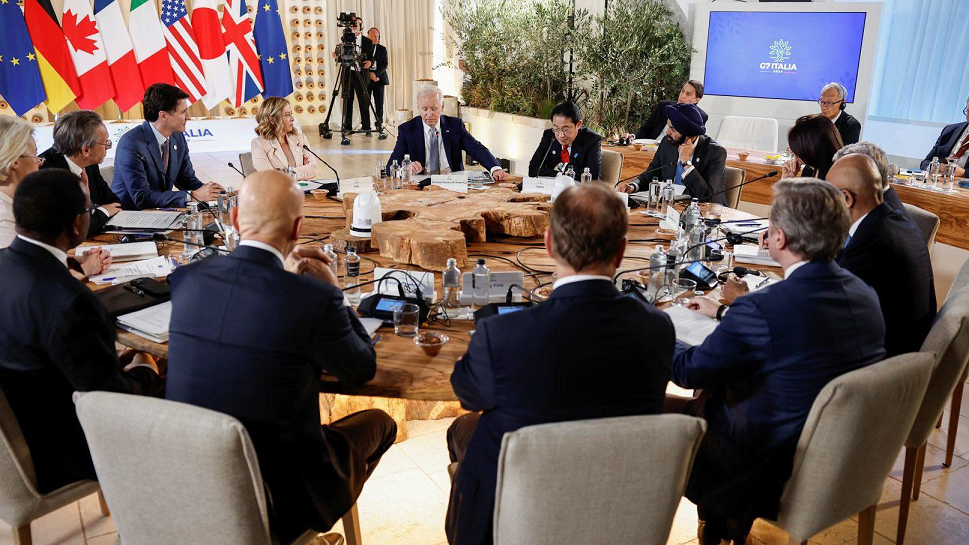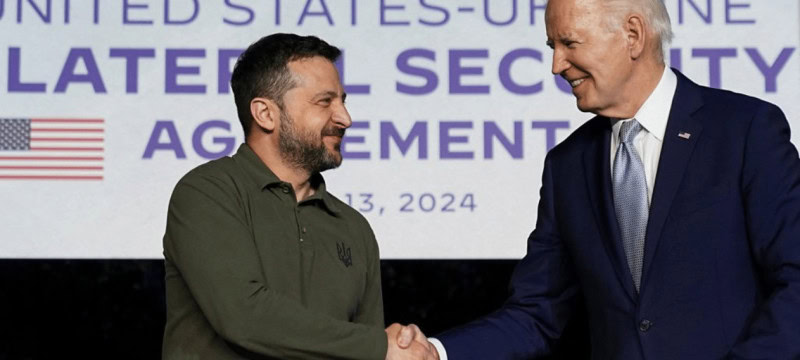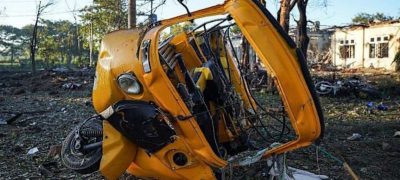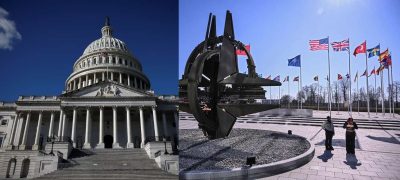The G7 has agreed to use frozen Russian assets to raise $50bn (£39bn) for Ukraine to support its fight against Russian invasion.
US President Joe Biden emphasized that this move sends a clear message to Russia that “we’re not backing down,” while Moscow warned of “extremely painful” retaliation. The funds are expected to be available by the end of the year and are intended as a long-term solution to aid Ukraine’s war efforts and economy.
Read more: Officials Report That A Russian Missile Attack Has Killed 9 People In Zelensky’s Hometown
At the G7 summit in Italy, Ukrainian President Volodymyr Zelensky and President Biden also signed a 10-year bilateral security agreement, which includes US military and training aid to Ukraine, though it does not involve sending US troops to fight.
Following Russia’s full-scale invasion of Ukraine in 2022, the G7 and the EU froze approximately $325bn worth of Russian assets, which generate about $3bn annually in interest. The G7 plan involves using this interest to cover the annual payments on the $50bn loan for Ukraine, sourced from international markets.

During a joint news conference in Puglia, southern Italy, President Biden highlighted that the loan will “put that money to work for Ukraine” and reiterated US commitment to Ukraine. He stressed that Russian President Vladimir Putin “cannot wait us out, he cannot divide us,” and assured continued support for Ukraine.
President Zelensky expressed gratitude for the unwavering support from the US and other allies, and referred to the new security agreement as “historic” for Ukraine since its independence in 1991.
The G7 nations—Canada, France, Germany, Italy, Japan, the UK, and the US—have been significant financial and military supporters of Ukraine. UK Prime Minister Rishi Sunak called the $50bn loan deal “game changing.”

The $50bn loan is substantial compared to the $61bn US military aid agreed in May. Some in Kyiv had hoped the G7 would release the entire $300bn frozen fund, not just the interest, but the European Central Bank ruled this out.
Unlike the immediate impact of the US aid package, this money will not arrive until later in the year, having little effect on the current conflict. Ukraine continues to urgently need more weapons, especially air defense systems and F-16 fighter jets, which are expected as early as this summer.
At the G7 summit, Mr. Zelensky noted that the new security agreement includes US shipments of these aircraft. The loan deal is symbolic, as it forces Russia to pay for Ukraine’s defense and reconstruction.
One of Zelensky’s advisers stated that this decision by the West marks a significant turning point in the war. However, the loan alone is unlikely to compel Russia to change its stance on the conflict.
Most of the frozen assets of the Central Bank of Russia are held in Belgium. International law prevents countries from seizing these assets and giving them to Ukraine. Hours before the G7’s announcement, Russian Foreign Ministry spokeswoman Maria Zakharova warned of “extremely painful” retaliation.









